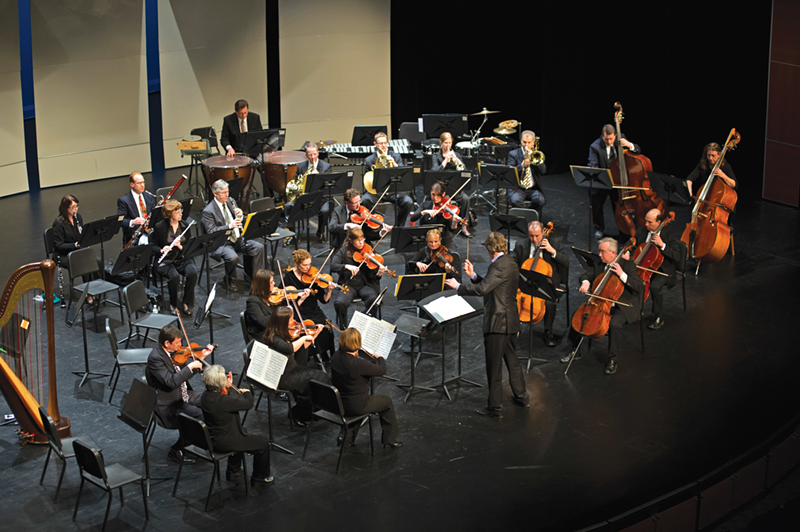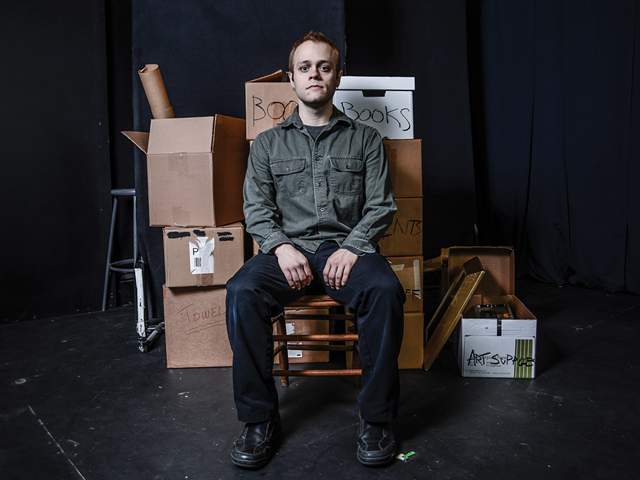T
he Cincinnati Chamber Orchestra concludes its 40th season on June 1 amid symptoms of classic midlife crisis. There’s no equivalent of a red Porsche, but there are serious concerns about the organization’s viability and how it might reinvent itself in a continually uncertain marketplace.
The CCO debuted in March 1974, evolving from all volunteers (musicians and staff) to a 32-member, all-union ensemble with three full-time staff members. Concerts frequently sold out thanks to a loyal subscriber list, with buzz generated by innovative programming and the orchestra itself comprised of relatively young musicians.
The CCO won a coveted Scripps-Corbett Award for artistic excellence in 2009, but that same year marked a downturn in the organization’s fortunes. A major foundation grant of $75,000 was not renewed, and the recession sapped corporate and individual giving. Cutbacks in the number of concerts led to a sharp decline in attendance.
In July 2012, two full-time staff appointments signaled an apparent return to stability. Thom Mariner was appointed executive director and LeAnne Anklan the organization’s artistic and orchestra operations manager.
Last September, the CCO announced Artistic Director Mischa Santora’s departure at the end of the 2013-14 season, a decision rumored not to be his. And just after the annual gala in March, Mariner’s position was eliminated after less than two years.
There’s consensus that several factors accounted for the downturn, starting with the CCO’s diminished presence.
“Ten years ago, there were 15 concerts a season. Now, we’re down to five concerts spread out over nine months,” says CCO Board President Jennifer Funk. “With this much time between performances, are people forgetting about us?”
Then there’s the orchestra — 32 professional union musicians whose salaries are the biggest chunk of CCO’s $500,000 budget. Another challenge is scheduling — “an extreme problem,” according to trumpeter Wes Woolard, who has been on the CCO roster for more than 20 years and serves as the musicians’ board representative. Like most CCO members, Woolard has several jobs teaching and performing with regional orchestras, and juggling 32 different jigsaw puzzles is a logistical nightmare when it comes to planning a season.
Scheduling conflicts were behind the loss of Anderson Center, where the CCO was orchestra-in-residence from 2008 to 2013.
“Anderson Center was becoming more popular and, with musicians’ scheduling conflicts, we couldn’t get the dates we wanted,” Funk explains.
The domino effect extends to difficulty obtaining sponsorships. “Waiting until everyone is scheduled means you’re the last organization to try raising money,” says Mariner.
The CCO has regained sponsors for concerts and events but not at previous levels, according to Ralf Ehrhardt, CCO’s business and development manager.
“It’s gotten harder,” he says. “Many foundations changed their mission and it’s a lot more competitive. But I can’t complain.”
Visibility is key in maintaining financial support, and musicians, staff and board members agree that the new artistic director must be committed to the community. Prior to Santora’s appointment in 2000, all previous artistic directors lived in Cincinnati. (Santora did not respond to requests for an interview.) Founder Paul Nadler was succeeded by Gerhard Samuel in 1984, and Keith Lockhart took over in 1992.
With no artistic director in place for next year, the board is acting on a suggestion from the orchestra.
“We asked that an artistic advisor be hired, someone with expertise in artistic and business management,” Woolard says. In an email, Funk noted that the board is interviewing candidates, adding, “The orchestra is very important if not foremost in the planning process.”
That position will be critical as the CCO considers moving to a festival format, which would concentrate performances into one or two periods during the season. It’s an opportunity for musicians to work together for longer periods — if their schedules permit. There’s also the potential to bring in candidates for artistic director. Collaboration with the Vocal Arts Ensemble and presenting Amahl during the holidays will continue next season.
In the meantime, the board is assisting with daily operations. “Everybody’s pretty involved now because they have to be,” Anklan says. She and Ehrhardt have backgrounds with small organizations, and the recent turn of events doesn’t faze them. They’re not overly concerned about the financial outlook, either. That’s because board members consistently underwrite deficits. But Funk, a financial advisor with Merrill Lynch, says that has to change.
“Under this current model, we can’t continue for another 40 years,” she says. “We have to be fiscally responsible and sustainable.”
There are no plans to rehire an executive director, a position Woolard says is vital, especially as new groups like concert:nova, the Constella Festival and three new chamber opera organizations compete for visibility, audiences and money.
Funk hopes to announce plans for next year by June 1.
This week, the focus is on the 40th anniversary concert at the University of Cincinnati College-Conservatory of Music’s Corbett Auditorium, featuring acclaimed soprano Sarah Coburn in a program of operatic favorites. It’s an opportunity to acquaint the audience with the CCO’s history, pay tribute to Maestro Santora and celebrate the CCO’s contributions to the local music scene, Anklan says.
Mariner points out that during his 22-month tenure the CCO was on an upward trajectory, with increases in attendance and overall earned income. To maintain a consistent presence in Cincinnati’s burgeoning chamber music scene, it’s going to take visionary leadership that inspires both musicians and audiences.
The CINCINNATI CHAMBER ORCHESTRA’s 40th anniversary concert featuring Sarah Coburn is Sunday at Corbett Auditorium, CCM Village. Tickets: www.ccocincinnati.org.







